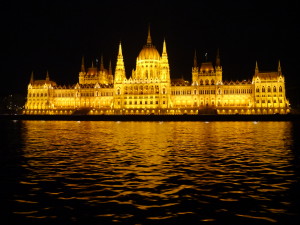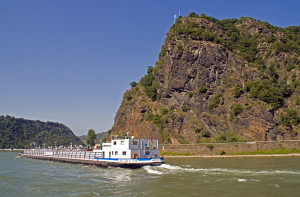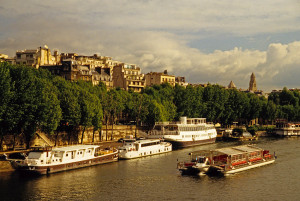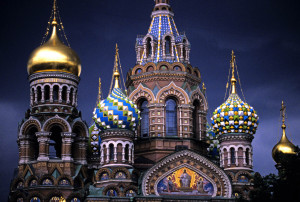First in a three-part series.
While all European rivers offer memorable scenery and an alluring array of port stops ranging from big cities to atmospheric villages, they also differ from each other in significant ways. Here’s a quick guide to help you decide which river cruise is right for you. (Keep in mind that itineraries may vary a bit among the different cruise lines.)
The Danube
>Europe’s second longest river is second to none in romance, scenic beauty and high culture. Most one-week Danube itineraries run between Nuremberg, Germany, and Budapest, Hungary, with stops in Vienna, Austria, and a voyage through Austria’s scenic Wachau Valley along the way. The Wachau Valley features the town of Dȕrnstein – where Richard the Lionhearted was imprisoned during the Crusades – and the nearby town of Melk, home to a restored 11th century Abbey.
Frequently offered side trips include medieval Český Krumlov in the Czech Republic, Bratislava in Slovakia and Salzburg in Austria – with echoes of Strauss, Mozart and the once mighty Habsburg empire resonating throughout.
But the Blue Danube touches 10 countries in all, and you can sail much farther into the heart of Eastern Europe: to Croatia, Serbia, Romania and Bulgaria, before the Danube empties into the Black Sea. This latter portion of the Danube will take you through the famed Iron Gate, a series of narrow gorges that forms a border between Serbia and Romania. Or combine a Danube cruise with a Rhine River cruise via the Main-Danube canal and sail west all the way to Amsterdam.
The Rhine
Flowing more than 700 miles from the Swiss Alps to the North Sea, the Rhine River is best known for the unforgettable Rhine Gorge that runs for 40 miles through the heart of Germany. Home to fairy-tale castles, churches, villages, vineyards, and legends – the Lorelei Rock is said to be haunted by a lovelorn maiden whose voice lures sailors to their doom – the gorge may be the most famed stretch in all of European river cruising.
Most Rhine River cruises are one week long and run between Amsterdam and Basel, Switzerland, and — due to the depth of the river — can accommodate somewhat larger boats than most other European rivers.
The German cities of Cologne, with its splendid cathedral; Koblenz, where the Rhine and Moselle rivers join; Heidelberg, the university town replete with medieval architecture; and the Alsatian French city of Strasbourg, where French and German cultures meld, are highlights along the route. You can also combine a Rhine River cruise with a Moselle cruise in Germany.
Or — for a two- or three-week voyage – connect with the Danube River via the Main-Danube canal, passing through multiple locks en route, and sail to Budapest or all the way to Romania deep in Eastern Europe.
The Seine
If you’ve been to Paris, you may have taken a Bateaux-Mouches excursion boat ride along the Seine, for waterborne views of the Eiffel Tower, the Louvre, and Notre Dame Cathedral. But week-long Seine River cruises take you far beyond the City of Light, north to Normandy on the English Channel.
On these cruises, geared toward art, architecture and history lovers, you may visit the fabulous Palace of Versailles, where King Louis XVI and Marie Antoinette held court before the French Revolution; Giverny, where Impressionist artist Claude Monet lived and painted for more than 40 years; Chateau-Gaillard, built by English king Richard the Lionhearted in 1196 following the Norman conquest; and the city of Rouen, where Joan of Arc was martyred at the stake.
From Rouen, excursions lead to the beaches at Normandy where allied troops landed in World War II — or to Honfleur, a port city and favorite subject of the Impressionists — before returning to Paris. Some river cruise lines offer an additional week on the Saône and Rhône rivers to Provence, after connecting from Paris by bus.
The Volga and Other Russian Waterways
The Volga, Europe’s longest river and a fixture of Russian folklore and song, is just one star of the six-day voyage between Moscow and St. Petersburg, Russia’s two greatest cities. (While cruise itineraries may range up to 11 to 13 days, the extra days will be spent in Moscow and St. Petersburg.)
To complete the journey by water, river cruise lines also rely on a number of other waterways, including other rivers, canals and Europe’s two largest lakes.
If starting in Moscow, you’ll have plenty of time to visit Red Square (with onion-domed St. Basil Cathedral), the Kremlin and other sights in the Russian capital – using the riverboat as your hotel and restaurant — before setting off on the Moscow Canal, which leads north to the Volga.
Highlights include exploring some of the ancient Golden Ring cities northeast of Moscow where traditional Russian culture – including often colorfully painted and intricately carved wooden houses — is on display.
After sailing the Volga, the Volga-Baltic Waterway, composed of a number of rivers, lakes and canals, then leads to the Baltic Sea over a distance of 230 miles, passing through seven locks. Along the way, you’ll cruise through Lake Onega, Europe’s second largest lake, where, on the island of Kizhi, you can view more ancient Russian architecture, including traditional windmills and wooden churches (one church was built without hammer or nail).
The Svir River then leads to Europe’s largest lake, Lake Ladoga, and, finally, the Neva River flows into St. Petersburg, where you can tour the Hermitage Museum and the city’s stunning imperial palaces, where the Romanovs reigned until the Russian revolution. You can also reverse the journey, starting in St. Petersburg and ending in Moscow.
Next up in Part II: The Rivers of Bordeaux, France; Portugal’s Douro; The Elbe (Germany and Czech Republic); and Sweden’s Göta Canal
An earlier version of this post appeared in StrideTravel.com, the premier online site for finding organized travel experiences.
















2 Responses to The Top European River Cruises: A Quick Guide